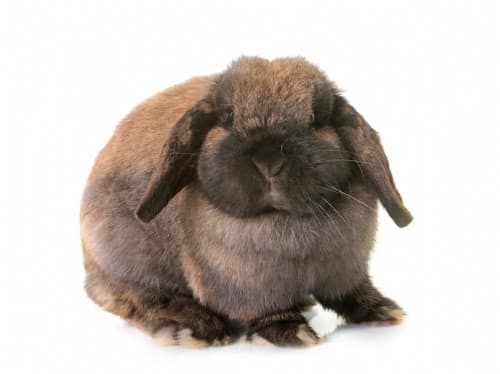
Rabbits
There are over 50 different rabbit breeds. The differences are in the build, colors and coat structure. There are rabbits with straight or lop-eared ears, bunnies that weigh only 1-2 kg or that even weigh 8 kg and rabbits with so much hair that it is difficult to see exactly what the front is! Read more…



Rabbits
The rabbit is one of the most common mammals in the Netherlands. The rabbit is a real herbivore (plant eater), it is the smallest grazer in the Netherlands. They live on a wide variety of plant foods, including grasses, herbs, tubers, bark and field crops. Rabbits, as herbivores, need plant foods with a lot of fiber. Hay is the best source of fiber for our house bunnies. Did you know that rabbits eat their own droppings? This is called coprophagy and they do it because digesting grasses is hard on the stomach. A cow has 4 stomachs for this, but rabbits do not, so they are smart about this by simply eating everything twice. Rabbits are mainly non-verbal animals. This means that they talk to each other through body language and don't really make a sound. They only express their displeasure with some growling noises and warn each other of danger by stamping their hind legs very hard on the ground. The only real sound rabbits can make is scream, they only do this when they are very scared or in pain. In the wild, rabbits always live in groups and are therefore social animals.
Pick order
The groups always consist of more females (nurses) than males (rattles). Rabbits have a strict hierarchy so it is always clear who is in charge of whom. Also as a pet you always keep the rabbit together with a congener. However, you can't just put all rabbits together. In the wild, rabbits have enough space to get out of each other's way in case of disagreement, so problems do not arise quickly. Just like with humans, every rabbit is different, they each have their own character. As a result, not every combination is a good match. Although rabbits like to live together, they do want to live with a rabbit that they like and with whom they can establish a hierarchy.


Which combination works best?
The best combination is a ram with a nurse, this actually (almost) always goes well. Of course it is important that at least the male is castrated so that the rabbits cannot reproduce. Another option would be two females. This can go very well, but there is also a big chance that it will go wrong! Females are very territorial and, especially when their hormones kick in, can get into a lot of fighting. This can also occur in sisters who have been together from an early age.
Sometimes one of the bunnies gives in and takes the subordinate role, but if this doesn't happen they still have to be separated. We therefore always advise against this. Two guys isn't a good idea either. Although some rams, provided they are both castrated early and match well in character, can live together very well, there is a much higher chance that this will go wrong. It is therefore nicer for the rabbits if you play it safe and make a couple of a ram and a nurse.
Rabbit Breeds
There are over 50 different rabbit breeds. The differences are in the build, colors and coat structure. There are rabbits with straight or lop ears, bunnies that weigh only 1-2 kg or that even weigh 8 kg and rabbits with so much hair that it is difficult to see what exactly is the front!


The 4 categories
1. Dwarf grasses < 2kg
These are the smallest recognized rabbit breeds. Dwarf grasses have a lively and busy character. Dwarf grasses are created by inheriting the dwarf gene from one of the parents. Because this is actually a genetic abnormality, rabbits will also be born in a litter that do not have this gene and therefore grow somewhat larger. Bunnies without the dwarf gene are called non-dwarfs or false dwarfs.
2. Small Breeds 2 – 3kg
Most rabbit breeds fall into this category. However, the character varies by race. Some breeds are spicier while others are more stable.
3. Medium Breeds 3 – 5kg
Rabbits in this category usually have a jovial and stable character and are therefore most suitable for children.
4. Large breeds > 5kg
Large breeds have a super calm and stable character.




